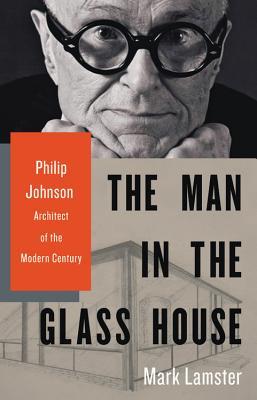
The Man in the Glass House
Philip Johnson, Architect of the Modern Century
کتاب های مرتبط
- اطلاعات
- نقد و بررسی
- دیدگاه کاربران
نقد و بررسی

Starred review from October 22, 2018
Architecture critic Lamster (Master of Shadows: The Secret Diplomatic Career of Painter Peter Paul Rubens) outlines the complicated and contradictory life of architect Philip Johnson in this engrossing, exhaustively researched account of a brilliant opportunist who introduced modernism to America. Johnson (1906–2005) came from a well-to-do Cleveland family and graduated from Harvard Graduate School of Design, traveled to Germany in the 1930s (where he was in awe of Adolf Hitler and developed “a continued fascination with the dictator’s Nazi party”), and founded MOMA’s architectural department before becoming one of the architectural world’s most skilled and controversial members. A theoretician as much as practitioner, Johnson continuously pushed boundaries, designing the Glass House in Connecticut in 1949, New York City’s Seagram Building in 1958, and the Johnson Building at Boston Public Library in 1972. Lamster employs thoughtful analysis (“Because he was restless and his mind was nimble, he could not resist the narcotic draw of the new, and the opportunities for self-aggrandizement the new presented”) to demonstrate Johnson’s desire to make his mark. This is an entertaining and in-depth look at one of architecture’s most complex and influential characters. Agent: Sarah Burnes, Gernert Co.

November 1, 2018
An astute but not terribly sympathetic look at the influential modernist architect.Brilliant and iconoclastic but prickly and controversial, Philip Johnson (1906-2005) led a seemingly charmed existence, but he was essentially restless, opportunistic, and--as Dallas Morning News architecture critic Lamster (Architecture/Univ. of Texas at Arlington; Master of Shadows: The Secret Diplomatic Career of the Painter Peter Paul Rubens, 2009, etc.) portrays through analysis of his architectural creations--often joyless. The well-off son of a Cleveland corporate lawyer and Quaker matron, Johnson was a dilettante in his youth. He became a scholar of classics and philosophy at Harvard, where he fell into a "fraternity of sympathetic gay men" who fervently discussed modern art and design; the group was led by Lincoln Kirstein, Paul J. Sachs, and Alfred H. Barr. The last would become the first director of the new Museum of Modern Art in New York. After a tour of radical European modernism, Johnson--before he even attended architecture school--was chosen to curate the museum's first groundbreaking architectural show in 1932, which featured exhibits by Frank Lloyd Wright, Walter Gropius, Le Corbusier, and Ludwig Mies van der Rohe. As "house architect" for the museum during four decades, Johnson produced such successful shows as Machine Art (1934) and fashioned the enduring urban oasis of the Abby Aldrich Rockefeller Sculpture Garden (1953). Lamster marvels at how Johnson was able to "straddle both the modernist and the traditionalist factions," from his own New Canaan Glass House (1949), skyline-altering Seagram Building (1958), postmodern AT&T Tower (1994), and other creations to his activism for various cities' Beaux Arts preservation. Notably, the author devotes significant attention to Johnson's troubling foray into fascist anti-Semitic politics of the 1930s, which indeed would haunt him later on.Offering a fresh look at his subject's less-than-savory aspects, Lamster portrays a diffident genius for whom being boring was the greatest crime and whose work, while often riveting, was also "barren and inert and lonely."
COPYRIGHT(2018) Kirkus Reviews, ALL RIGHTS RESERVED.

Starred review from November 1, 2018
To describe architect Philip Johnson as a confounding figure would be an understatement. As a critic in the 1920s, he helped introduce modernist architecture to the U.S. As an architect, he mastered that style and then abandoned it for postmodernism. He was a failed political agitator, a virulent anti-Semite who dreamed of becoming an American Hitler, and a designer of synagogues who had close Jewish friends. Lamster's mesmerizing, authoritative, and often-astonishing study grapples with Johnson's legacy in all its ambiguity. In Johnson's chameleonlike career?his audacious stint as the first architecture curator at the Museum of Modern Art, his transformation into a high-society architect, and his rise as a preeminent designer of skyscrapers?Lamster depicts a man by turns enchanting and irritating, sublime and subpar, pioneering and derivative. Contradictions abound to the point of absurdity: the gay Johnson joins Lawrence Dennis, a black Fascist passing for white, in organizing a 1930s pro-Nazi political campaign. What does it mean that this man, of all people, became the leading architectural light of late-twentieth-century America? Johnson's contradictions, Lamster argues, reveal something of the nation's. Readers may come away with both contempt and admiration for the subject, a testament to Lamster's masterful achievement.(Reprinted with permission of Booklist, copyright 2018, American Library Association.)




















![Design Like You Give a Damn [2]](https://dl.bookem.ir/thumbnails/150/ISBN13/9781613122860.jpg)




دیدگاه کاربران